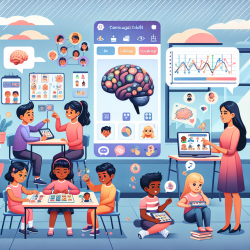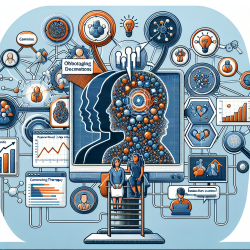Introduction
In the realm of speech-language pathology, data-driven decisions are crucial for improving therapy outcomes, especially in online settings. As a practitioner, leveraging advanced computational tools like NumPy can significantly enhance your ability to analyze data and tailor interventions effectively. The research article "Array Programming with NumPy" provides insights into how this powerful library can be utilized to handle complex data efficiently, making it an invaluable asset for speech-language pathologists.
Understanding NumPy's Role
NumPy, a primary array programming library for Python, is renowned for its ability to manipulate and operate on data in vectors, matrices, and higher-dimensional arrays. This capability is particularly beneficial in fields that require extensive data analysis, such as speech-language pathology. By adopting NumPy, practitioners can streamline data processing tasks, allowing for more time to focus on creating impactful therapy plans for children.
Implementing NumPy in Speech-Language Pathology
Here are some practical ways to implement NumPy in your practice:
- Data Organization: Use NumPy arrays to organize client data, including assessment scores, session notes, and progress metrics. This structured approach ensures that data is easily accessible and analyzable.
- Statistical Analysis: NumPy's array-aware functions enable quick statistical analyses, such as calculating means, variances, and correlations. These insights can inform evidence-based decisions and personalized therapy adjustments.
- Visualization: Integrate NumPy with libraries like Matplotlib to create visual representations of data. Visual aids can help in communicating progress to parents and educators, fostering a collaborative approach to therapy.
Encouraging Further Research
While NumPy offers a robust framework for data manipulation, continuous learning and adaptation are key to maximizing its potential. Practitioners are encouraged to explore additional resources and stay updated with the latest advancements in array programming. Engaging with the scientific Python ecosystem, which includes libraries like SciPy and pandas, can further enhance your analytical capabilities.
Conclusion
By integrating NumPy into your practice, you can improve the efficiency and effectiveness of your therapy sessions. This not only benefits your workflow but also contributes to better outcomes for the children you serve. Embracing data-driven methodologies ensures that your interventions are grounded in evidence, ultimately leading to more successful therapy experiences.
To read the original research paper, please follow this link: Array programming with NumPy.










